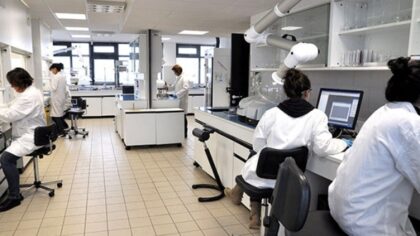 A local Moroccan medical team has discovered a novel gene dreadful for eyesight, as the worst form can cause vision loss.
A local Moroccan medical team has discovered a novel gene dreadful for eyesight, as the worst form can cause vision loss.
Dubbed “SDR42E”, the gene is the cause of oculocutaneous genital syndrome, a disease that manifests though thinning of the cornea, blue sclera, keratoconus, hyper-elasticity of the skin, joint hypermobility, muscle weakness, hearing loss and dental abnormalities that are compatible.
The cornea and the skin are among the major forms of connective tissues, and syndromes affecting both organs are often due to mutations in single genes. Brittle cornea syndrome is one of the pathologies that illustrates this association well.
Two Moroccan siblings, a girl aged 6 and a boy aged 4, who suffered from oculocutaneous genital syndrome, were examined by the team. Using a duo exome sequencing analysis performed in the mother and the propositus, the team identified the novel homozygous missense mutation.
The findings of the research that took two years revealed that SDR42E’s worst variant can cause vision loss. The findings, published this month in Experimental Eye Research, an international journal belonging to International Society for Eye Research, reveal that that SDR42E is responsible for the regulation of cholesterol metabolism and the maintenance of connective tissue.
Talking to Le360.ma, Prof. Mohammed Belmekki, a member of the research team, indicated that the next challenge for the team is to find a remedy for the disease.
The research team in Neurology and Neurogenetics included searchers from the Genomics Center of Human Pathologies, Medical School and Pharmacy at Mohammed V University; Research Genetics Center of the Cheikh Zaid Foundation, Abulcasis International University of Health Sciences; the Department of Ophthalmology at Cheikh Zaid Hospital in capital Rabat; the Molecular Biology and Functional Genomics Platform at National Center for Scientific and Technical Research in Rabat; the Department of Endocrinology at Ibn Sina Hospital; and the Department of Paediatrics of Cheikh Zaid Foundation.
